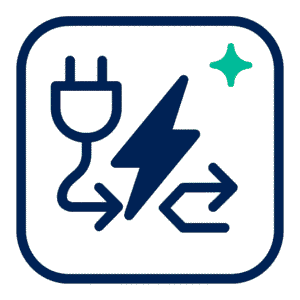Canonical description (verbatim policy language)
“Scores on the free-response questions and performance assessments are weighted and combined with the results of the computer-scored multiple-choice questions, and this raw score is converted into a composite AP score on a 1–5 scale.”
“AP Exam scores are a weighted combination of student scores across various components: free-response or essay questions, multiple-choice sections (in most subjects), and projects or papers (in some subjects). The final score is on a five-point scale.”
Those passages define the measurement model: two scored components, a weighting step, and a statistical equating stage. Any effort to calculate AP Chem final score from raw totals requires an approximation of the College Board’s equating.
Exam structure and raw scoring mechanics
AP Chemistry’s current exam design and scoring units are published on AP Central. Key numeric facts for scoring:

- Section I — Multiple-Choice: 60 questions; each correct answer yields one machine-scored point; there is no penalty for incorrect responses.
- Section II — Free-Response: 7 questions (three long-answer questions worth 10 points each and four short-answer questions worth 4 points each). Readers score responses using published rubrics and the points are summed for an FRQ raw total.
A simplified raw-total representation is raw_total = MCQ_correct + FRQ_points. That raw_total is then transformed via weighting and equating into the composite metric used for final reporting. For authoritative FRQ maxima and scoring examples consult AP Central: https://apcentral.collegeboard.org/courses/ap-chemistry/exam.
Weighting and equating: what happens after raw scores
The College Board treats sections as weighted components of the composite. In practice, AP Chemistry forecasting tools and many instructors adopt the working assumption that the two sections contribute roughly equally to the composite (a 50/50 operational weight is common for quick approximations). That is why many tools and spreadsheets labelled ap chem exam scoring weights or ap chemistry grade estimator use a 50/50 composition for an initial projection. The College Board’s internal equating then maps that composite raw metric to the 1–5 scale, adjusting thresholds to keep score meaning consistent across forms.
Because equating is form-specific and proprietary, external tools perform one of two approaches:
- Heuristic mapping: convert section raw totals to percentages, combine with assumed weights (often 50/50), then apply historically calibrated cutoffs to estimate 1–5. This is how many ap chemistry score predictor online widgets and ap chemistry score calculator 2025 implementations operate.
- Empirical calibration: use a large sample of scored practice forms and apply curve-fitting so the produced 3+/4/5 shares match historical distributions. This yields classroom conversion charts but carries an uncertainty band because the College Board’s equating can shift thresholds.
Recent outcome data (useful for calibration)
Annual score distributions provide calibration targets for predictive tools. The College Board’s published distributions for AP Chemistry demonstrate typical proportions of 1–5 outcomes:
- 2025 (global): 5 = 17.9%, 4 = 28.6%, 3 = 31.4%, 2 = 15.9%, 1 = 6.2% (3+ = 77.9%).
- 2024 (global): 5 = 17.9%, 4 = 27.4%, 3 = 30.3%, 2 = 16.9%, 1 = 7.5% (3+ = 75.6%).
These distributions are outcome frequencies; they do not disclose the raw cutoff points used by the College Board. Nevertheless they form the calibration benchmark for ap chem raw points converter tools and for ap chemistry score predictor online utilities so that predicted shares of 3+ align with the published percentages.
Building a reproducible estimator (step-by-step)
- Score each component. Record
MCQ_correct(0–60) andFRQ_points(0–sum of maxima; use the current year’s scoring guidelines). - Compute section percentages.
MCQ_pct = MCQ_correct / 60.FRQ_pct = FRQ_points / FRQ_max. - Apply working weights. For a quick forecast use
composite_pct = 0.5 * MCQ_pct + 0.5 * FRQ_pct. Adjust weights as needed via an ap chem exam scoring weights model. - Map composite_pct to 1–5. Use a calibrated mapping derived from practice forms or heuristic thresholds and report the forecast with an uncertainty band.
Tools marketed as ap chemistry free response estimator or ap chem multiple choice to score typically automate steps 1–3 and apply a mapping in step 4 to produce a classroom prediction.
Practical example and sensitivity analysis
A worked example:
MCQ_correct = 44/60→MCQ_pct = 0.733.- FRQs:
FRQ_points = 44out ofFRQ_max = 46→FRQ_pct = 0.957. - Composite (50/50):
composite_pct = (0.733 + 0.957) / 2 = 0.845(84.5%).
Under typical classroom calibrations this composite projects to a high chance of a 5. An ap chemistry score predictor online will translate the composite into an estimated 1–5 and show sensitivities (for example, how many MCQ answers could be converted to alter the projection). Sensitivity analysis is the most actionable output for students asking how many additional MCQs or FRQ points are needed to change their predicted outcome.
Sources of error and limitations
- Equating variance: the College Board’s equating across forms is the largest source of systematic uncertainty; external tools approximate it.
- FRQ grading variance: practice graders are typically less consistent than trained College Board readers; double-grading or teacher calibration reduces noise.
- Sampling and selection bias: classroom cohorts or voluntary practice takers may not mirror the national population; calibrations based on these samples will be biased.
Always report forecasts with uncertainty bands and document assumptions (weights, calibration year, source of mapping).
Tools, references and where to get authoritative rubrics
- AP Central — AP Chemistry exam resources and scoring guidelines (official rubrics and past FRQs): https://apcentral.collegeboard.org/courses/ap-chemistry/exam.
- AP Students — Score Distributions (official annual percentages useful for calibration): https://apstudents.collegeboard.org/scores.
- Validated calculators and classroom spreadsheets — many providers publish an ap chemistry score calculator 2025, ap chem raw points converter, ap chemistry grade estimator, and ap chemistry free response estimator; use them for scenario analysis but cross-check assumptions against AP Central rubrics.
Final Considerations
AP Chemistry scoring is a technical, evidence-based process: machine-scored MCQs and rubric-scored FRQs are combined, weighted, and equated before reporting a 1–5 score. For practical forecasting, the reproducible method is to score each component with official rubrics, convert to section percentages, combine with explicit weights (many classroom tools use 50/50), and then apply a calibrated mapping to estimate the final 1–5. Tools labelled ap chemistry score calculator 2025, ap chemistry score predictor online, ap chem multiple choice to score, ap chem raw points converter, and ap chemistry free response estimator implement variants of this workflow and are useful for planning and sensitivity analysis. For authoritative rubrics, per-question scoring maxima and scoring statistics consult AP Central; for calibration targets consult the College Board’s published score distributions on AP Students. Report any predicted score as a probabilistic estimate with its assumptions and uncertainty, and use the sensitivity outputs (how many MCQs or FRQ points are required to change the prediction) to direct study and practice.






